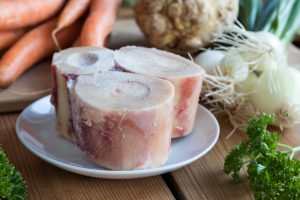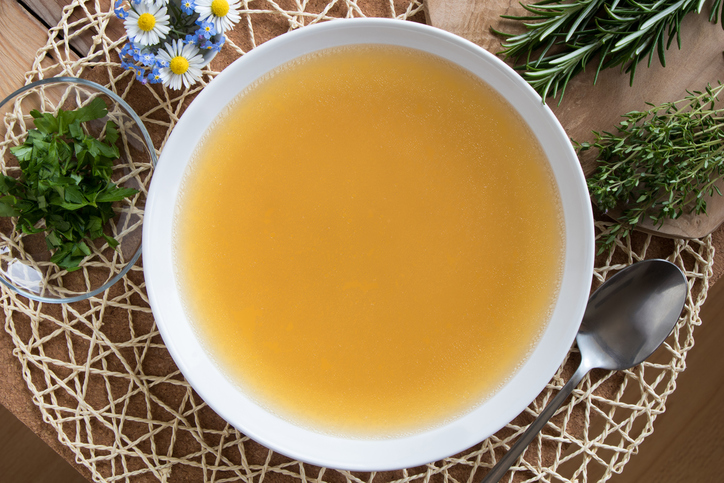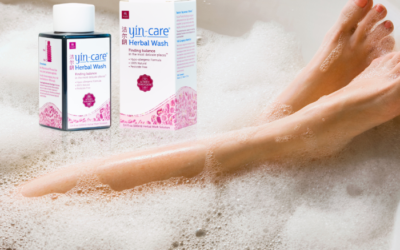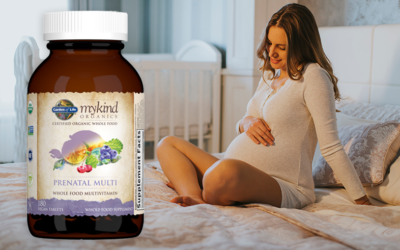Bone Broth with Chinese Herbs
Prepare Your Broth
There are three ways to cook bones into broth:
- Stove top
- Slow Cooker
- Instant Pot.
There are links to recipes at the end of this article but here is the bare bones of it …
Use organic ingredients. Save bones from a meal. You can freeze them and use them frozen. Many butchers have marrow bones (sometimes called pet bones, as in for dogs) and oxtails. Gelatinous bones, oxtail, pig/beef/chicken feet, or knuckle bones make for a very gelatinous rich broth. Meaty bones give the broth a nice flavor.
In your chosen cooking pot, use approximately 1 quart of water per pound of bones. You can also add chopped vegetables if you choose.
For Stove top and Slow Cooker, bring to a boil and scrim the froth off, reduce heat to a simmer. Cook for 4-24 hours; very large bones require longer cooking, up to 72 hours. The broth is done when the connective tissue is mostly dissolved. Smaller bones will crumble, larger ones will seem pitted or chalky. For Stove top and Slow Cooker versions, be sure you are using a non-reactive and lead free pot. You can add a little vinegar or lemon juice, the acidity will help pull the minerals out of the bones. With Instant Pot there is no need to for this addition. The pressure alone makes a lovely broth. Cook Instant Pot broth for 2 1/2 hours.
Cool to a workable temperature. Strain through a fine sieve or double layered cheese cloth. Chill and gel in the fridge. At this point you can remove the fat which will have congealed on the surface. For future use, transfer into portion sized containers and freeze. Bone broth will keep tightly covered in the fridge for up to five days and frozen for several months.
Kitchen tip: Use the bones a second time. For a thorough examination of the benefits of bone broth enjoy this presentation by Kaayla Daniel, Ph.D., CCN at the Ancestral Health Symposium.

Add Your Herbs
Broth is heated.
You’ve chosen your three herb combo (see below). Serving size for each herb is 1-2 scoops.
Consider “sapors” – this is a correlation between the taste of the herb and the therapeutic function or how the body responds to that herb. There is an instantaneous transmission of the herbal properties, in addition to pharmacological properties of ingesting that herb.
Taking the right herbs will not only do your body good, it will taste right too.
Add a scoop of herb and taste. Add the next herb. How does that taste? And the third? Does it taste right? If it’s the wrong herbs, they will taste bad and it’s time to reassess.
Herb #1: General Tonification – For The Family
Dang Shen, Shan Yao, Hong Zao
This trifecta of soup herbs is appropriate for all ages. Together they gently tonify the whole body through the digestion and Kidney Qi. Kidney Qi is the root of the energy for the whole body, influencing day to day energy and long-term health. This is not for use during an acute illness.
Dang Shen
Also called “poor man’s ginseng”, Dang Shen is more affordable and safe for everyday use. Ginseng should be saved for extreme situations. Like Ginseng, Dang Shen increases stamina and strength. Used for any chronic illness with digestive weakness, it helps with chronic cough, fatigue, and reduced appetite. Overall Dang Shen promotes general health. Recent research connects it with tissue repair and improved cognition (2,3). Dang Shen is often paired with Shan Yao to treat fatigue with cough and digestive weakness. Paired with Hong Zao it is another traditional treatment for weakness.
Shan Yao
As a dried bulk herb, Shan Yao looks like chalk. First impressions can be deceiving. One of its other names is “Fairy Food”. This refers not to Tinkerbelle, but to Taoist fairies or “Xian”. The Xian strove to achieve immortality or enlightenment. Calm and youthful, they were immune to changes in the weather and had the ability to fly! In ordinary usage, Shan Yao enhances energy, digestion, and tissue repair. Shan Yao is thought to have the ability to restore inherited constitutional weaknesses. Chemical analysis shows Shan Yao to contain Allantoin. A compound used to treat insulin-resistant diabetes and to promote wound healing. (4)
Hong Zao
Hong Zao or Red date is the fruit of the Jujube tree. Cultivated in China for over 4,000 years, the fresh fruit is a pleasure to eat. Used in dried form in formulas Hong Zao helps with fatigue, insomnia, and weak digestion. Biochemical analysis shows an array of nutrients: magnesium, potassium, copper, niacin, calcium, manganese, phosphorus, and iron. The fruit contains 20 times more vitamin C than any citrus fruit. Vitamin C helps the immune system and maintains connective tissue, including bones, blood vessels, and skin. Potassium plays a part in regulating blood pressure by relaxing the blood vessels. Hong Zao is rich in Cyclic Adenosine monophosphate, an essential substance for metabolism (5).
Herb #2: Trapped Heat – Clean The House
Bai He, Lian Zi, Qian Shi
Feeling phlegmy, tired but not sleeping well, is your skin breaking out? It’s easy to eat too much-fried food and greasy food, especially during the holidays and winter. Given the chance, the body can rebalance and detox. Detoxes, whether herbal of dietary, can be hard on the system and are not for everyone. The next three herbs help to clean the house bit by bit. Like having a favorite aunt come over and tidy and clean while you are asleep. Bai He, Lian Zi, and Qian Shi are part of a cleansing and energizing herb and food mix from renown Dr. Miriam Lee.
Bai He
Bai He is a lily bulb, often used in soups and even made into a traditional dessert. This bulb helps to calm the mind, especially after a fever. Bai He rehydrates the lungs for a dry cough or cough with yellow phlegm. When tuning the system to clean itself, the lungs are important. So delicate, yet they continually expel metabolic wastes (6). The re-hydrating or Yin nourishing function of Bai He balances out the drying and astringent functions of the other two herbs. Between these functions, tissues get squeezed and rinsed. This formula has two calming herbs, Bai He and Lian Zi. Being calm frees the liver to detox by decreasing the burden of stress hormones. They also help with sleep when much of the bodies metabolic waste is processed.
Lian Zi
Lian Zi is the seed of the lotus plant. Thriving in the muckiest of mud all parts of the lotus are used in Chinese medicine, seed, leaf, and root. The seed, the “zi”, helps to calm the spirit for insomnia. As one might expect from a water plant, Lian Zi balances conditions of too much dampness. Used to treat diarrhea, lack of appetite, insomnia and anxiety, a look at its bits and pieces is revealing. Lian Zi contains L-isoaspartyl methyltransferase. This enzyme has anti-aging properties, it helps to repair damaged proteins. Also present is glutathione, a master detox antioxidant and key to liver detoxification.
Qian Shi
Known as the “water ginseng” Qian Shi is similar to Lian Zi, but without the calming quality. One of the oldest Chinese materia medicas lists it as a top grade youth and beauty tonic. It is often used in martial arts training formulas. Both Lian Zi and Qian Shi have the ability to keep important Kidney Qi from leaking. Remember how Lian Zi contains glutathione? Qin Shi has components which enhance cellular use of glutathione (7).
Herb #3: Longevity – Boost and Bolster
Huang Jing, Gou Qi Zi, He Shou Wu
Aging is inevitable and we all hope to experience the wisdom without much infirmity. Healthy aging has been one of the challenges accepted by Chinese herbal medicine. The theory is the same from the Taoist immortality elixirs to formulas for emperors. When Kidney Jing is gone, we die. Jing is used up over a lifetime. It is used more quickly through overwork, drinking and drug abuse, promiscuity, poor quality food, irregular eating habits and not enough sleep. It is generally agreed that Jing cannot be replaced. It is possible to cultivate or build it so that it works better. The following soup herbs are from the Taoist longevity tradition. Best for the over 50 crowd or by recommendation from your herbal practitioner. Bon appetite for many years to come.
Huang Jing
Huang Jing is easy on the digestion and can be consumed daily. It treats poor appetite, dry coughs, dizziness, and fatigue from poor digestion and overwork. Huang Jing is said to build Jing (8). Looking through the lens of science Huang Jing does have some remarkable abilities. It protects DNA from damage (9)(11). It has a major role in treating diabetes (10). TB patients showed a change from positive to negative sputum (8). The most prominent protein in Huang Jing is a mannose-binding lectin. This protein is instrumental for immunity. (12)
Gou Qi Zi
Gou Qi Zi or Wolfberries are quite popular, you can find them in many health food stores as Goji Berries. Gou Qi Zi is considered particularly good for the eyes. Like Huang Jing, Gou Qi Zi is good for Kidney Jing. Studies show restored liver function to chemically damaged livers, and lowered blood pressure. Long-term use increases serum and liver Phospholipids (8). This lipid protein binds together every living cell. Phospholipids are key for organ, nerve and skin function. The body creates much of what it needs. However when organs are stressed and as the body ages supplementation is helpful (13).
He Shou Wu
He Shou Wu translated is “Black Haired Mr. He”. Surprise! One of this herb’s specialties is reversing prematurely grey hair. He Shou Wu and the other two herbs in this triad nourish the liver and kidneys. He Shou Wu does a couple of other unexpected tasks too. It helps the body rid itself of hot swollen lymph such as carbuncles, sores, scrofula. It nourishes and cleans the blood and treats some types of constipation. He Shou Wu was often used the Taoist immortality recipes. It has been shown to stimulate the production of superoxide dismutase (SOD). This potent antioxidant is a highly efficient free radical scavenger. There is a correlation between SOD and extended lifespan. One of its functions is to bind to mitochondria protecting them from oxidative stress (14,15).
Granule Serving Size
Adults:1-2 scoops 1-3x day. Consult your herbal practitioner for children’s servings.
Use herbs wisely
If you have questions, special considerations or are pregnant, consult with your practitioner. If symptoms worsen or you have concerns, contact your practitioner.
Disclaimer
These statements have not been evaluated by the Food and Drug Administration. These products are not intended to diagnose, treat, cure or prevent any disease.
(*) This a pretty big statement. Although Google can’t answer the question “What cultures do not eat soup?”, I thought maybe the Native Peoples of Alaska or Canada, don’t eat soup. I was wrong. Searching several more cultures I still could not find a soupless one.
<h3>Recipes</h3>
Instant Pot Bone Broth
Instant Pot bone broth tutorial
Stove top and Slow Cooker Bone Broth
Nourishing Traditions Second Edition, Sally Fallon, 1999 New Trends Publishing
Reactive cookware
You Tube about Broth
Food Terminal They have super Asian style from scratch soups which would pair well with your granule herbs.
References
(1) https://www.ncbi.nlm.nih.gov/pubmed/11035691/
(2) tissue repair https://www.wjgnet.com/1007-9327/full/v23/i26/4724.htm
(3) Memory: with Ginkgo https://examine.com/supplements/codonopsis-pilosula/
(4) Allantoin Wound Healing: https://en.wikipedia.org/wiki/Allantoin
(5) Hong Zao ATM: DOI: 10.1016/S0031-9422(00)83955-2
(6) Metabolic waste including fat: http://www.bmj.com/content/349/bmj.g7257
(7) Antioxidant and glutathione: https://www.nature.com/articles/emm200215
(8) Chinese Herbal Medicine Materia Medica, Bensky/Gamble, Eastland Press Revised edition
(9) DNA https://www.ncbi.nlm.nih.gov/pubmed/8721630
(10) Diabetes https://www.ncbi.nlm.nih.gov/pubmed/8312868 & https://www.ncbi.nlm.nih.gov/pubmed/19735171
(11) https://link.springer.com/article/10.1007/BF00042237
(12) https://en.wikipedia.org/wiki/Mannan-binding_lectin
(13) http://www.life-enhancement.com/magazine/article/1575-the-power-of-iessentiali-phospholipids
(14) increases SOD https://www.ncbi.nlm.nih.gov/pmc/articles/PMC4436517/
(15) https://www.ncbi.nlm.nih.gov/pmc/articles/PMC4436517/

A licensed acupuncturist since 1999, Diana lives and works in Santa Cruz, California. Her practice focuses on pain management, stress reduction, and creating health. A longtime friend of plants, she loves the herbal side of Traditional Chinese Medicine. Diana shares her herbal interests through writing and a card game she designed and illustrated: Herb Apocalypse*. Volunteer work includes The Rabbit Haven, a rabbit rescue, and Livity Rising, free community healing clinics. Author of Herb Apothecary: The Coloring Book: 54 Chinese Herbs available on Amazon.



